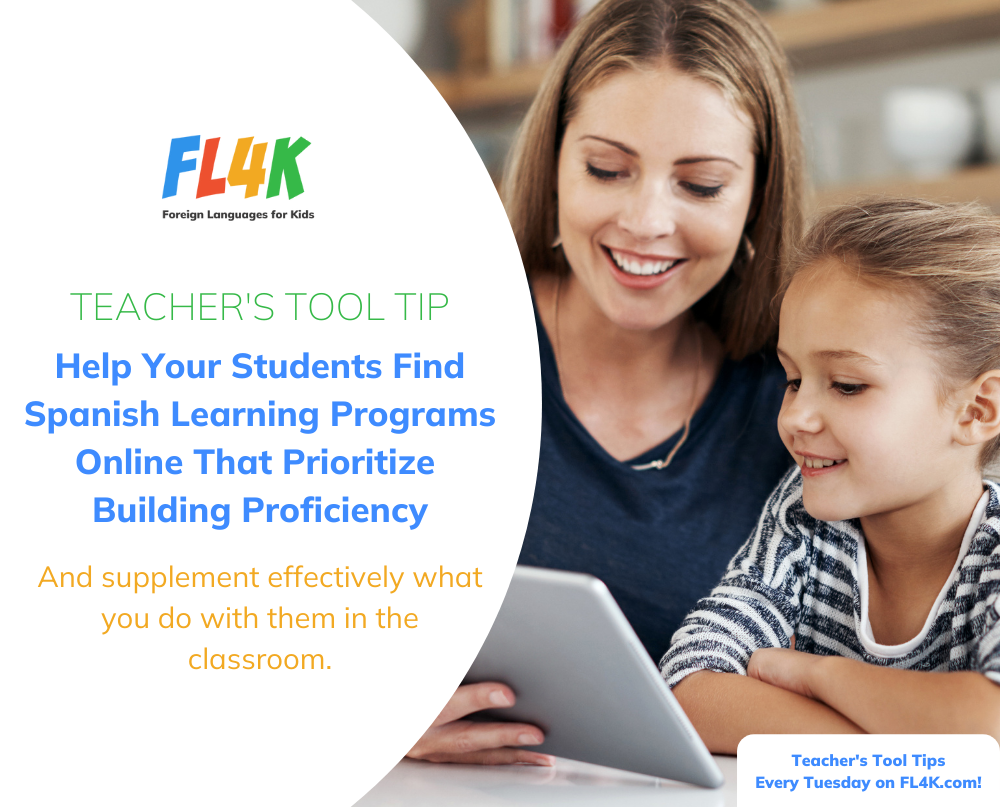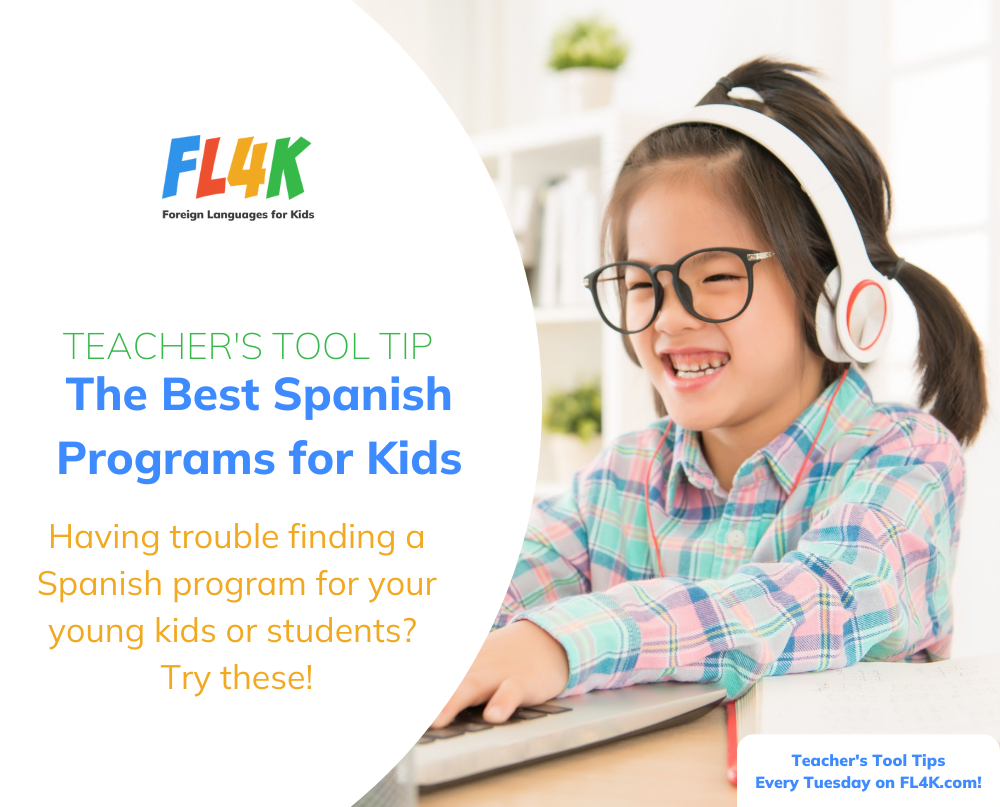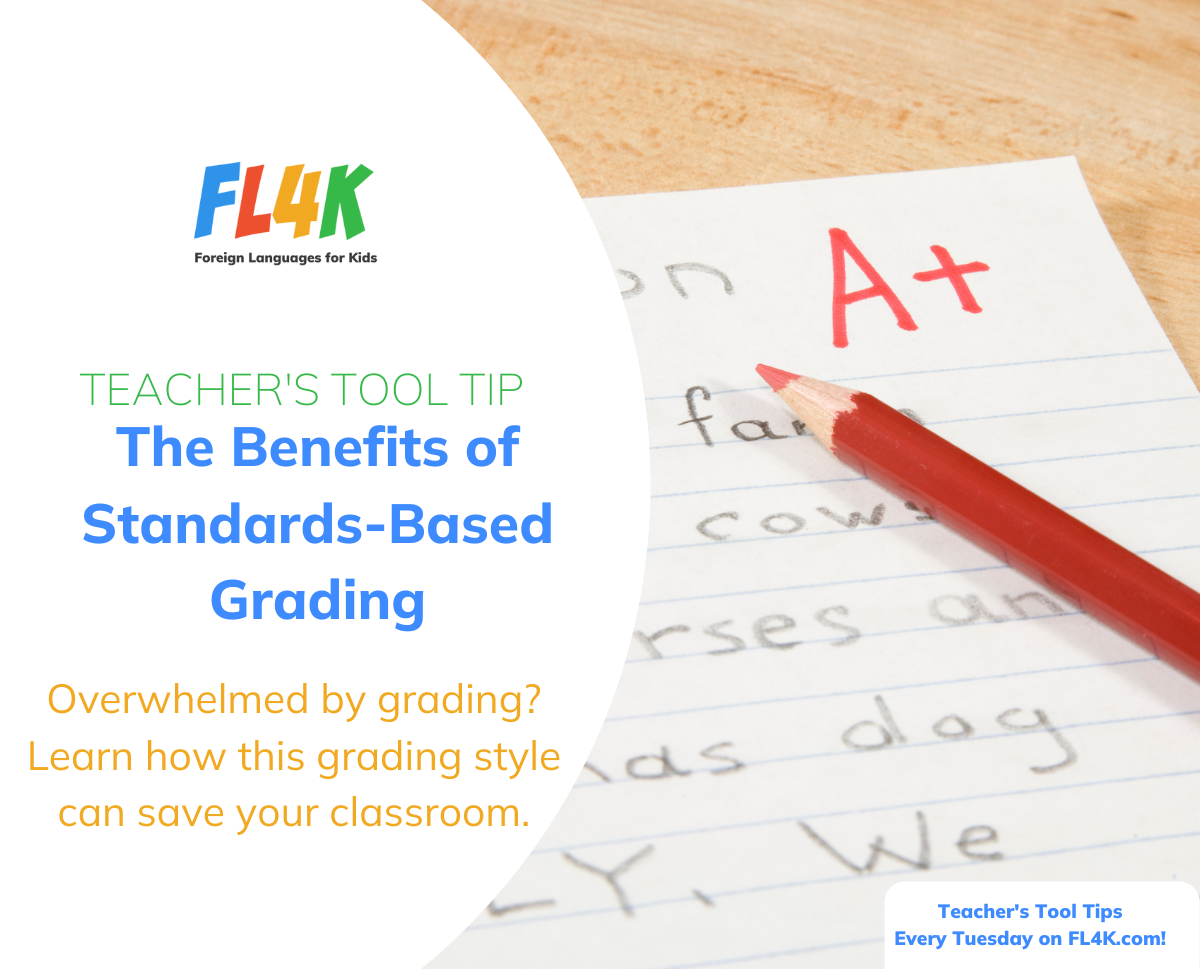I have been studying, learning, speaking, teaching, and tutoring Spanish for 40+ years, forever seeking the secret formula for language learning for my students that have ranged in age from 3 to 80. Many ask me what the best Spanish learning programs are.
Honestly, since I learned through school, study abroad, travel, and many extended immersion experiences, I have never felt like an expert on Spanish learning programs. That being said, I have taught thousands of Spanish students, and I listen to what they tell me about Spanish learning programs outside my class, and I note how they help my students.
There are no magical programs that do the work for you, of course! You have to be dedicated and committed to learning another language and use a multi-faceted approach to get results. Even though there are no perfect Spanish learning programs on the market, I will mention a few that have been popular with my students.
Spanish learning programs for adults
Many of my adults have been learning Spanish with me for 15+ years. Some tell me it is a hobby and they enjoy the pure challenge of it. Others are motivated to communicate as professionals with their clients or patients or are interested in traveling the culturally diverse and spectacular Spanish-speaking world. Or have read the fact that learning a new language grows brain cells and helps to prevent Alzheimer’s.
While I have learned from these dedicated language students that there is no perfect Spanish learning program, I have heard of several that are widely popular and even addictive.
Language student’s favorites
The competitive and conscientious students love Duolingo. I have one brilliant British student who calls it “Duobongo.” Cracks me up every time she says it with her accent! She always tells me that this Spanish learning program has helped her build vocabulary. She loves its discipline in between our weekly classes, where we practice using the language to build oral proficiency.
Another student told me that the best Spanish learning program for her was Behind the Wheel since she could listen to it in her car, and the language was very practical.
Last year I had one of my AP students tell me about a podcast series that she was listening to to improve her listening comprehension called Espanolistos. Another student said to me that she enjoyed listening to News in Slow Spanish in between classes to improve her listening comprehension.
Quite honestly, children have the most facile brains for learning language. Still, traditionally, elementary schools in the United States have not prioritized world language learning programs, missing an excellent opportunity to help students achieve native pronunciation in a second language and create intercultural awareness that fosters global citizenship for a lifetime.
Newsela is a Spanish learning program that creates interesting and relevant articles for students to read in Spanish. You can determine what reading level is best for you with options to read the same article with more or less detail.
All of these students learned that even though many of them had been studying Spanish for years, they had to find a Spanish learning program to supplement 1-3 hours a week in class. I highly recommend sampling the many programs on the market and finding one that enhances your learning and motivates you to practice Spanish every day!
Spanish learning programs for children
I became more convinced than ever about the importance of teaching a second language to children when I was tasked with creating a Spanish learning program for children PK-4th grade in the ’80s. Since I was teaching in Wisconsin, I had the opportunity to learn from the master of language-learning for children, Helena Curtain.
I learned all about how contact hours predicted outcomes and that there were minimum requirements for students to actually start building proficiency in what could be considered a FLES program.
I learned that an hour a week would not be enough to expect development in proficiency and would be considered a FLEX program with the “EX” indicating EXploratory. These Spanish learning programs simply served to create enthusiasm for learning languages in the future.
I have been searching for results for a long time and always come back to the same conclusion; no Spanish learning program will do the work for you! The results come with the opportunity to study and practice consistently in a way that motivates you.
FL4K: Foreign Languages for Kids
Upon my retirement from teaching last year, I had the opportunity to put some of my years of experience and professional development to good use when a former colleague asked me to join her in working to enhance a Spanish learning program for Novice-Intermediate Spanish students, FL4K.
I couldn’t have imagined a more perfect invitation.
Together with a small teacher-team of experts, I was being invited to help create an interculturality program interwoven with language to build oral proficiency. I had my Modified Oral Proficiency Interview (MOPI) certification, and as department chair of a world language program at a private school, I helped convert a traditional world language department to a standards-based proficiency-driven one. Through this experience, I truly began to further unlock the secrets to success in language learning.
Now I was being asked to help scaffold an intercultural curriculum to push proficiency? No brainer for me!
Many of the textbooks and Spanish learning programs I have used through the years are grammar-driven and bereft of cultural material relevant to Gen Z students. Aside from being dry, they are not written in a way that my students can access information in language written for their particular proficiency level.
The program we are building for FL4K is not only relevant and fun; proficiency is a priority. Students delve deeply into the culture of ten different Spanish-speaking countries while building proficiency at their own speed, differentiated for Novice to Intermediate levels.
The built-in practice exercises and games are specifically designed to build proficiency, unlike the majority found in textbooks and online Spanish learning programs.
The polling and commenting features that mimic social media are highly motivating! With built-in language lab recording features, students build confidence in speaking from an early age, beneficial for standardized tests like AAPPL, AP, and IB. The pre-AP cultural comparisons have students building cultural awareness and intercultural competency from elementary ages on.
My colleagues and I have joined a talented team of designers and developers that are making our wishlist for a results-driven Spanish learning program come true.
Please check out our website, Fl4K.com. You will not be disappointed with this state-of-the-art Spanish learning program for all ages!
And sign up to take a class with me, too! It’s always fun to meet and build relationships with other language learners. My students have become some of my very close friends, and they enjoy being in a community with each other!
Stay tuned for next week’s Teacher’s Tool Tip, and if you missed any of my passed tool tips, you can find them all on our blog. Be sure to follow us on social media for more language tips and fun resources!




